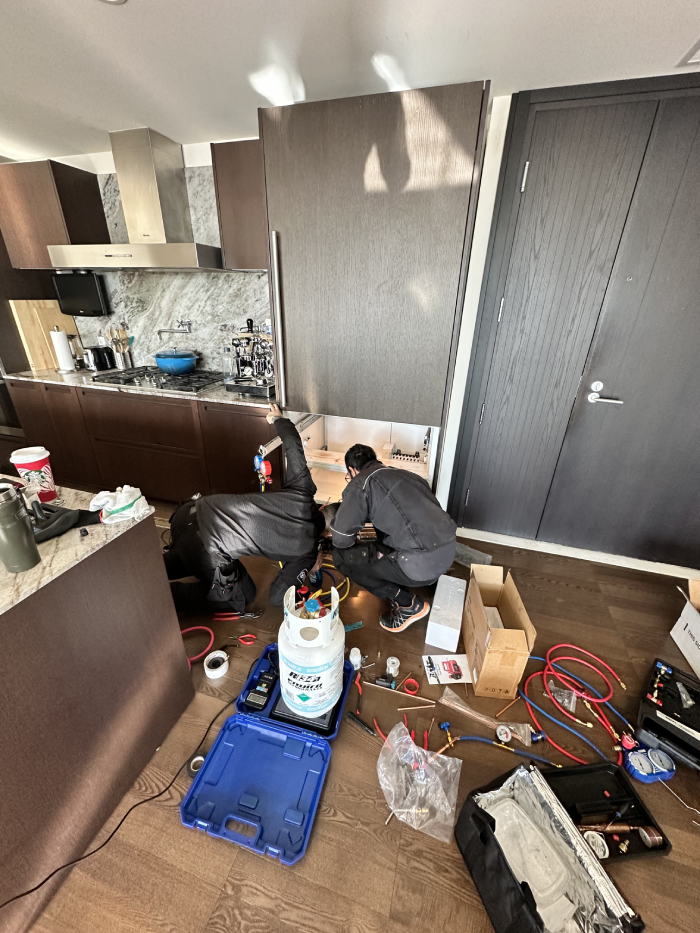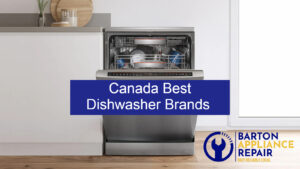It is safe to say that our home appliances are starting to match our modern homes, especially electronics and multiple operating systems. They have become very sophisticated and quite independent in a lot of ways. We have to agree that they have better functionality and efficiency. But with this, when something is wrong with them, there are a lot of complicated steps to resolve them. The good news in this is that most manufacturers have introduced easy diagnostic modes and troubleshooting into these modern machines. They have specialised testing features that make the appliance troubleshooting process easier for you or if you choose to call a technician.
Today in this blog, you will get to know how diagnostic modes make our lives simpler and how they identify the appliance’s faults so easily!
The Diagnostic Mode
This mode is like a built-in testing system that runs checks on small parts, and other processes. If they detect something wrong, they will pinpoint the problem through error codes and automated testing sequences. The diagnostic mode and troubleshooting is a very intelligent feature that erases any kind of guesswork and gives you straight answers. Be it a minor glitch or a major mechanical failure.
The beauty of the diagnostic mode and troubleshooting is that they have a very systematic approach. They don’t just rely on external symptoms alone, but they also test the appliance’s internal monitoring system. This gives them all the needed information about that part’s performance, electrical signals, and mechanical functions that won’t be visible through the old appliance troubleshooting methods.
Benefits of Using Diagnostic Mode
Time and Cost Efficiency
The diagnostic modes make a big difference as they reduce the time we spend on recognising the issues in the appliances. So, instead of manually testing multiple parts, this automated system quickly assesses and narrows down the potential issues. This is very cost-saving, making your or technician’s work easier. They can directly focus on the problematic parts rather than spending hours doing unnecessary checks.
Accurate Problem Identification
The kind of precision this mode gives helps in reducing a lot of uncertainty in appliance troubleshooting. The error codes and the test results give us very specific information about the faulty parts that reduce the chances of a wrong diagnosis. This accuracy makes sure that the repairs are helping the root cause and not just treating symptoms.
Preventive Maintenance
Most diagnostic systems can detect early signs of wear and potential failures before they turn out to become a bigger problem. This early warning capability allows preventive maintenance to avoid costly breakdowns and helps in increasing the appliance’s lifespan.
Related: Safe Practices for Live Voltage Testing in Appliance Diagnostics
Common Diagnostic Features in Appliances
Washing Machine
Modern washing machines use diagnostic modes to test:
- Water level sensors and pressure switches
- Door lock mechanisms and safety features
- Motor function and spin speed
- Water temperature regulation
- Drain pump operation
These tests will help identify issues like improper water filling, drainage problems, or motor malfunctions. The machine typically shows specific error codes that correspond to each potential problem. This, in turn, makes it easier for the technician to solve the problems easily.
Refrigerators
Diagnostic testing in refrigerators mostly focuses on cooling parts.
- Compressor operation.
- Defrost system function
- Temperature sensors
- Fan motors
- Door seals and switches
A refrigerator’s diagnostic mode can reveal issues like failing thermistors, malfunctioning defrost heaters or compressor problems. A lot of modern refrigerators even include connectivity features that can send diagnostic information directly to technicians.
Dishwashers
A dishwasher’s diagnostic mode looks at:
- Water inlet and drainage systems
- Spray arm function
- Heating element performance
- Pump operation
- Door seals and latches
These tests will quickly catch any problems like blocked filters, faulty water inlet valves, or heating element failures. The systematic approach of the diagnostic mode makes sure that all potential issues are checked in a sequence and that every part is looked at.
Related: Full-Size Ovens and Modern Lifestyles: Are They Still a Match?
Accessing and Using Diagnostic Modes
How to Activate?
Almost all appliances need a specific sequence of button presses to enter the diagnostic mode. The buttons and the sequences can be different and depend on your appliance’s manufacturer and model. But, the basic process includes:
- Pressing multiple buttons in a particular order
- Holding certain buttons at the same time for a specific duration
- Using power cycling sequences
- Accessing through digital control panels
It is important to consult your appliance’s manual or manufacturer’s website to confirm the correct activation sequence. If you press the wrong buttons, it might affect your appliance. So, make sure to double-check.
Understanding Results
To understand what the diagnostic mode results mean, you need to know:
- Error code meanings and their suggestions
- Normal operating parameters
- Part testing sequences
- Warning indicators and their significance
Most of the manufacturers provide a detailed document explaining all these things. This mostly includes troubleshooting guides that are specific to each error code and test result.
Related: What Are Wiring Diagrams and Why Do They Matter for Your Appliances?
Professional vs. DIY Diagnostics
The diagnostic modes make the appliance troubleshooting process a lot easier. This also helps in understanding when it is safe to do a DIY repair versus calling a professional.
Suitable for DIY:
- Basic error code interpretation
- Simple component testing
- Minor maintenance issues
- Software-related problems
Call a Technician:
- Complex electrical issues
- Major mechanical failures
- Safety-related concerns
- Warranty-covered repairs
Related: Essential Tools Every Appliance Owner Should Keep for Basic Repairs
Conclusion
Diagnostic mode and troubleshooting, now, go hand in hand. This mode has changed the way appliance troubleshooting works. It is more systematic and accurate in finding faults. These built-in testing features help everyone save a lot of time, energy and money. Along with this, it also makes sure that the repairs are precise and reliable. As technology keeps on developing, these diagnostic tools will become better and better, simplifying the process of keeping home appliances running smoothly. Don’t think that this diagnostic mode is only for technicians and not homeowners. It is for everyone to get to know the problem. If you can easily solve it with DIY then go ahead! But, if you can’t call a technician from Barton Appliance Repair, as they are known for their skill!





